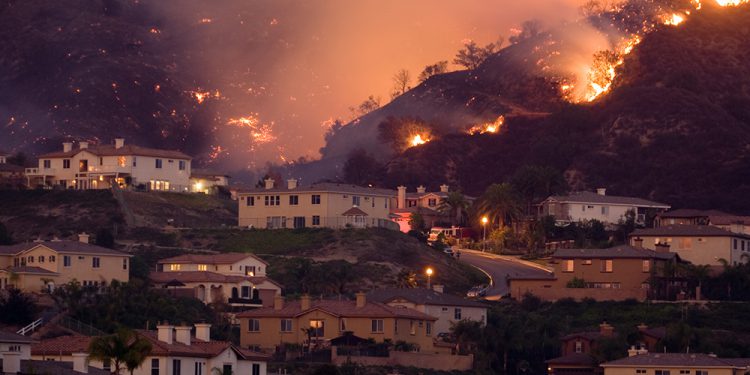What role can they play in property insurance?
Separate wildfire deductibles could be critical in securing
coverage for a peril that is location-specific yet popping up all across the continent.
By Joseph S. Harrington, CPCU
If they work for windstorms, can they work for wildfires?
“They” in this case are peril-specific deductibles in property insurance policies that are higher than the basic policy deductible for other perils. These separate deductibles are often set as a percentage of the loss, the applicable limit, or the value of property at risk, rather than as a flat dollar amount.
Risk professionals know these, for the most part, as separate “hurricane” or “named storm” deductibles implemented in areas prone to severe windstorms. Without them, property coverage might not be available or affordable in certain regions.
Under separate windstorm deductibles, if a storm reaches a scale that prompts a naming of the event or a disaster declaration, policyholders assume a greater share of the loss than if the damage was caused by a smaller storm or another peril.
After some initial reluctance, most states came to accept higher windstorm deductibles as standard features of policies on coastal properties and inland properties exposed to convective storms. Agents and brokers in these markets must explain the rationale and application of these deductibles—not an enviable task when a client has suffered extensive storm damage.
Impact unclear
As insurance news goes, it was a big deal in 2016 when then-California insurance commissioner Dave Jones announced a deal with Allstate to allow separate deductibles for damage caused by designated wildfires. Under an endorsement option, insureds could select a separate higher deductible for wildfire damage in exchange for a reduction in premium.[1]
Since then, separate wildfire deductibles have been introduced by several but not all residential property insurers in California and other states. The deductibles reportedly range from 1% to as much as 15% of a dwelling property limit (Coverage A).
It’s not clear how many policies have such deductibles, or what their impact has been on overall loss costs from wildfires. What is clear is that the availability of the deductibles has not prevented admitted insurers, including Allstate, from reducing their exposure in the state and ceding market share to E&S carriers that have greater pricing flexibility.
What’s also clear is that separate wildfire deductibles barely register in discussion of measures to alleviate California’s insurance crisis, discussion dominated by consideration of loss avoidance, loss mitigation, and rate adequacy.
A peril that comes and goes
Not all perils are created equal, and thus not all peril-specific deductibles will operate in the same way.
Hurricane and named-storm deductibles have become standard features of windstorm underwriting, in part because the peril exists apart from the property exposed to damage. Winds blow and buildings are damaged. How much damage depends on the strength of the wind and the strength (or weakness) of the buildings, but weak buildings do not cause strong winds.
With wildfires, the property at risk actually aggravates the peril. Wood shingle roofs on non-resistive structures set within vegetation provide fuel for a fire. This fact points to another important distinction between wildfires and windstorms.
Over time, the behavior of wind is reasonably predictable, even if you believe climate change is generating more intense storms. What you learn from the application of a windstorm deductible will remain relevant for the same area indefinitely.
In contrast, wildfires consume their own fuel, almost eliminating the possibility of a wildfire in the same location for several years. Unless its residents are grossly irresponsible in rebuilding, Los Angeles County should be among the least wildfire-prone areas in the future.
From this, we can see why carriers would be reluctant to invest much in developing wildfire deductible pricing that could be obsolete after its first application. For agents and brokers, however, separate wildfire deductibles could be critical in securing coverage for a peril that is location-specific, yet popping up all across the continent.
[1] “California Commissioner, Allstate Agree to Homeowner Rate Reduction,” Insurance Journal, Feb. 17, 2016; accessed
The author
Joseph S. Harrington, CPCU, is an independent business writer specializing in property and casualty insurance coverages and operations. For 21 years, Joe was the communications director for the American Association of Insurance Services (AAIS), a P&C advisory organization. Prior to that, Joe worked in journalism and as a reporter and editor in financial services.






